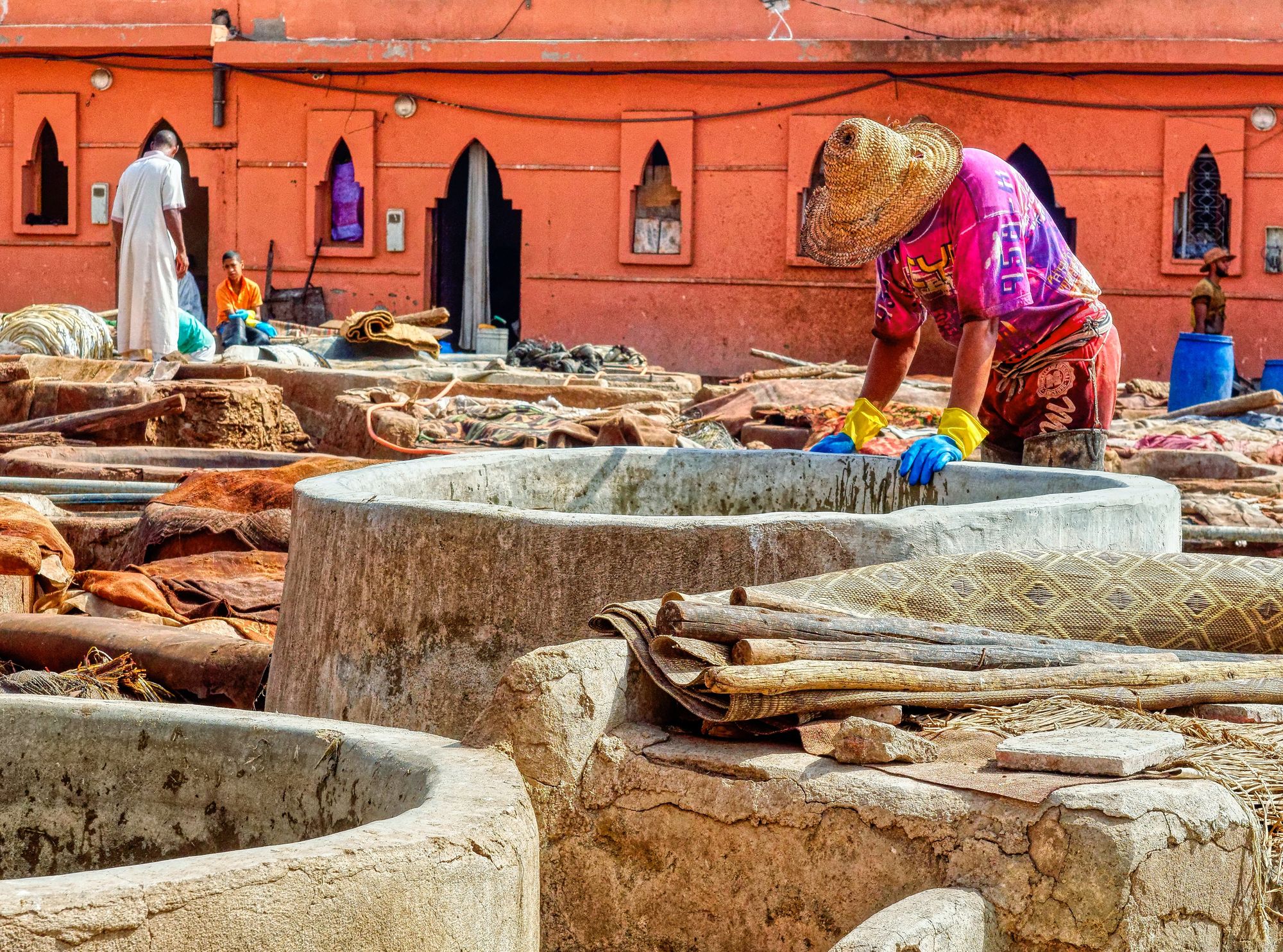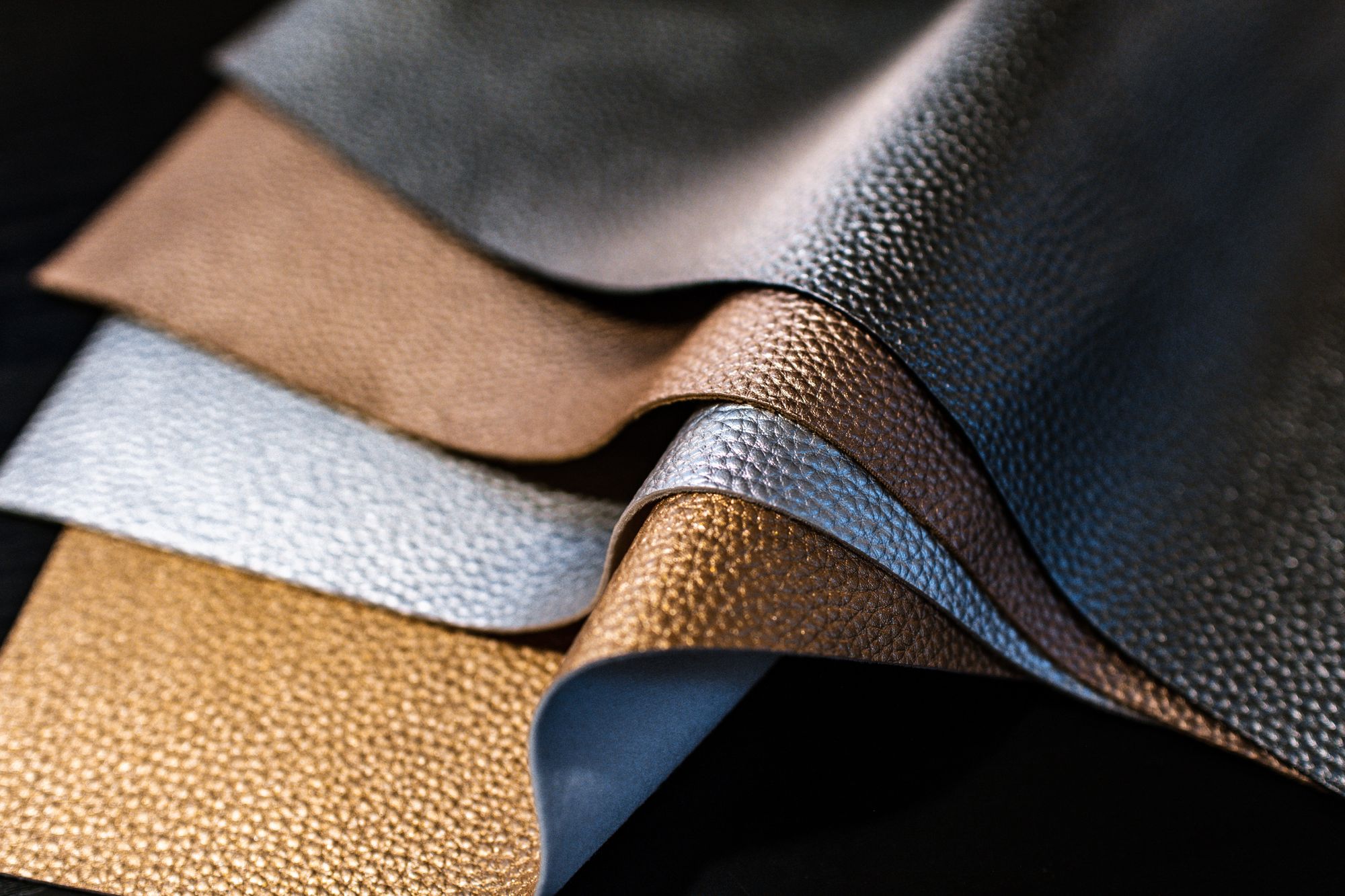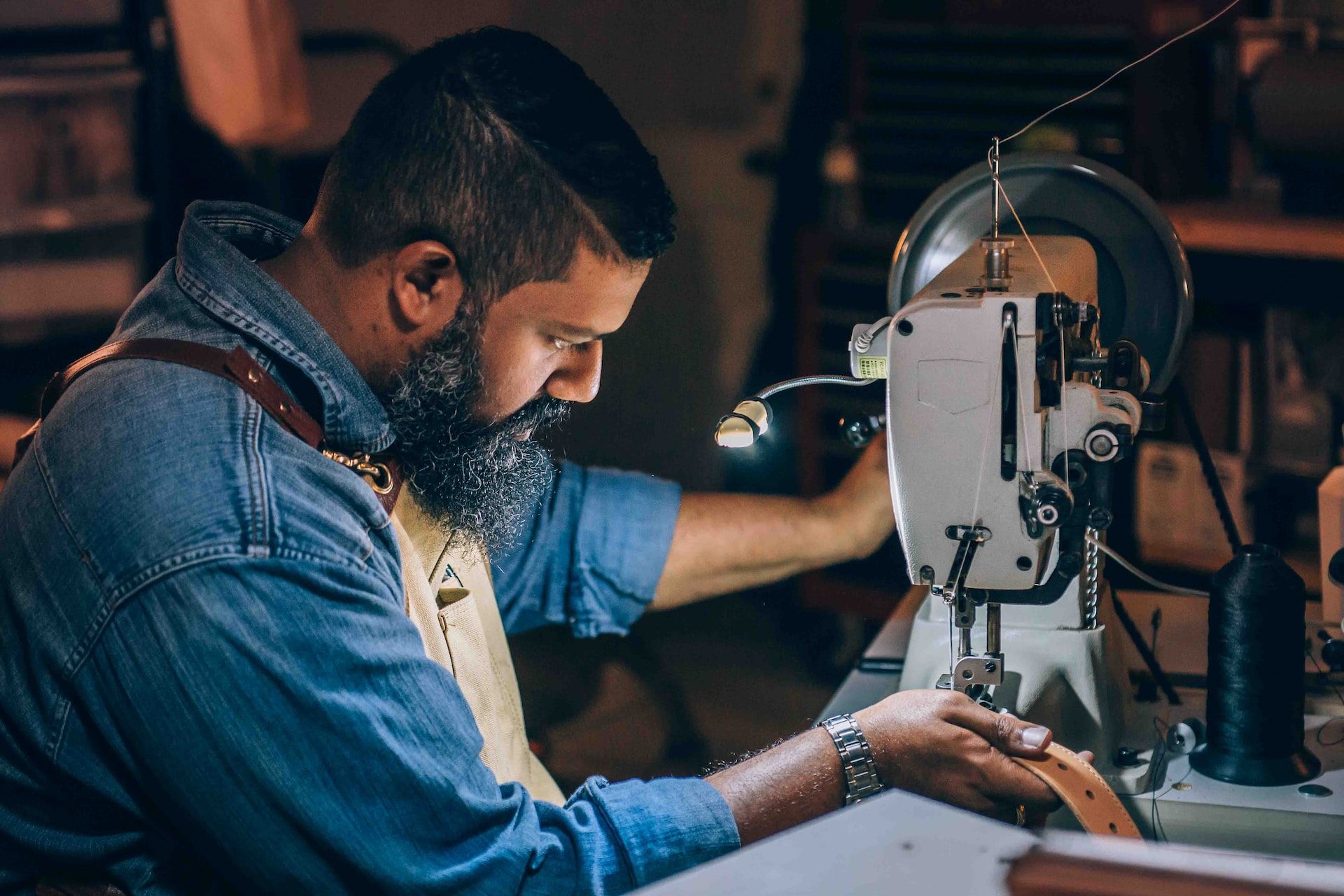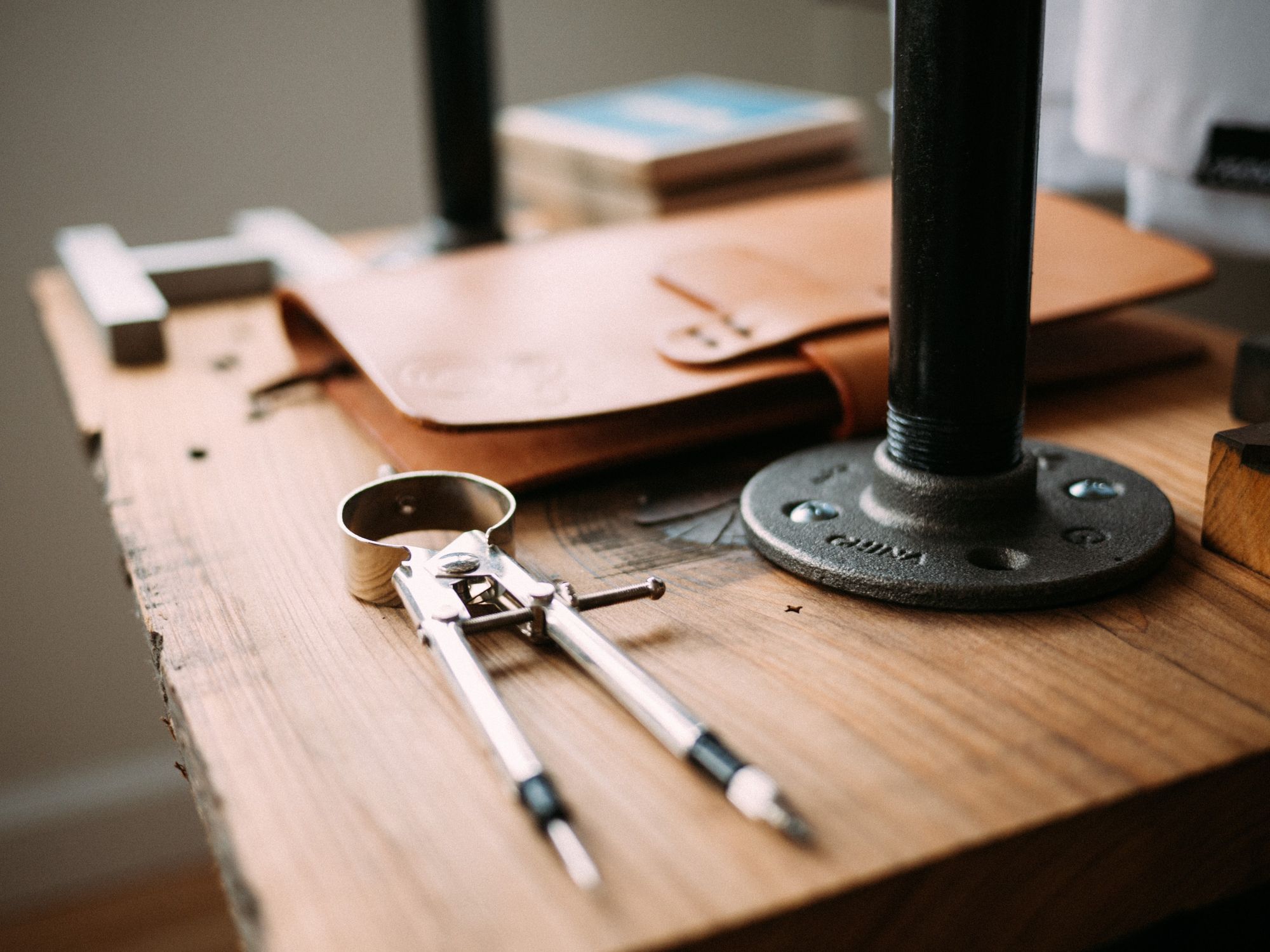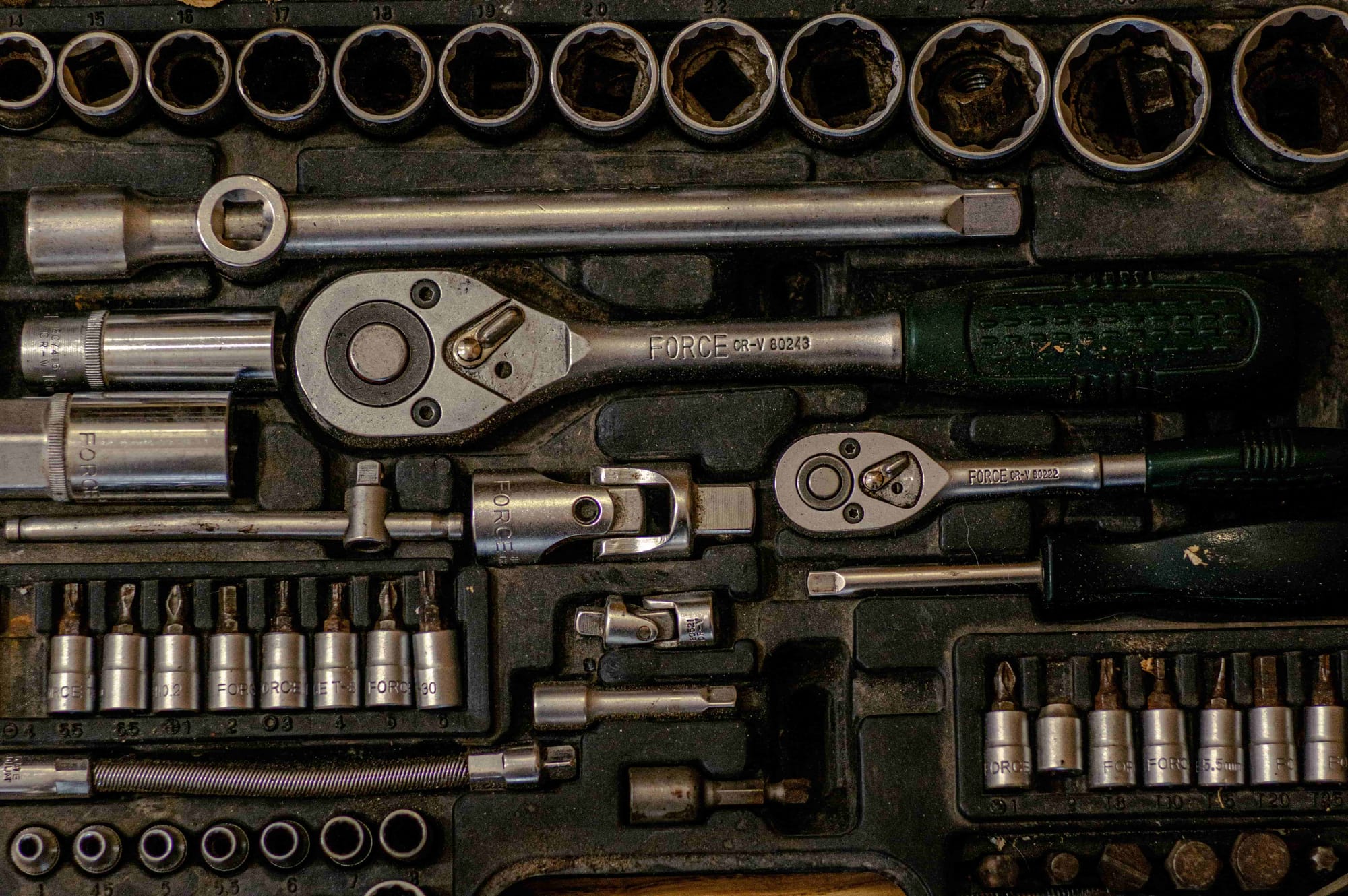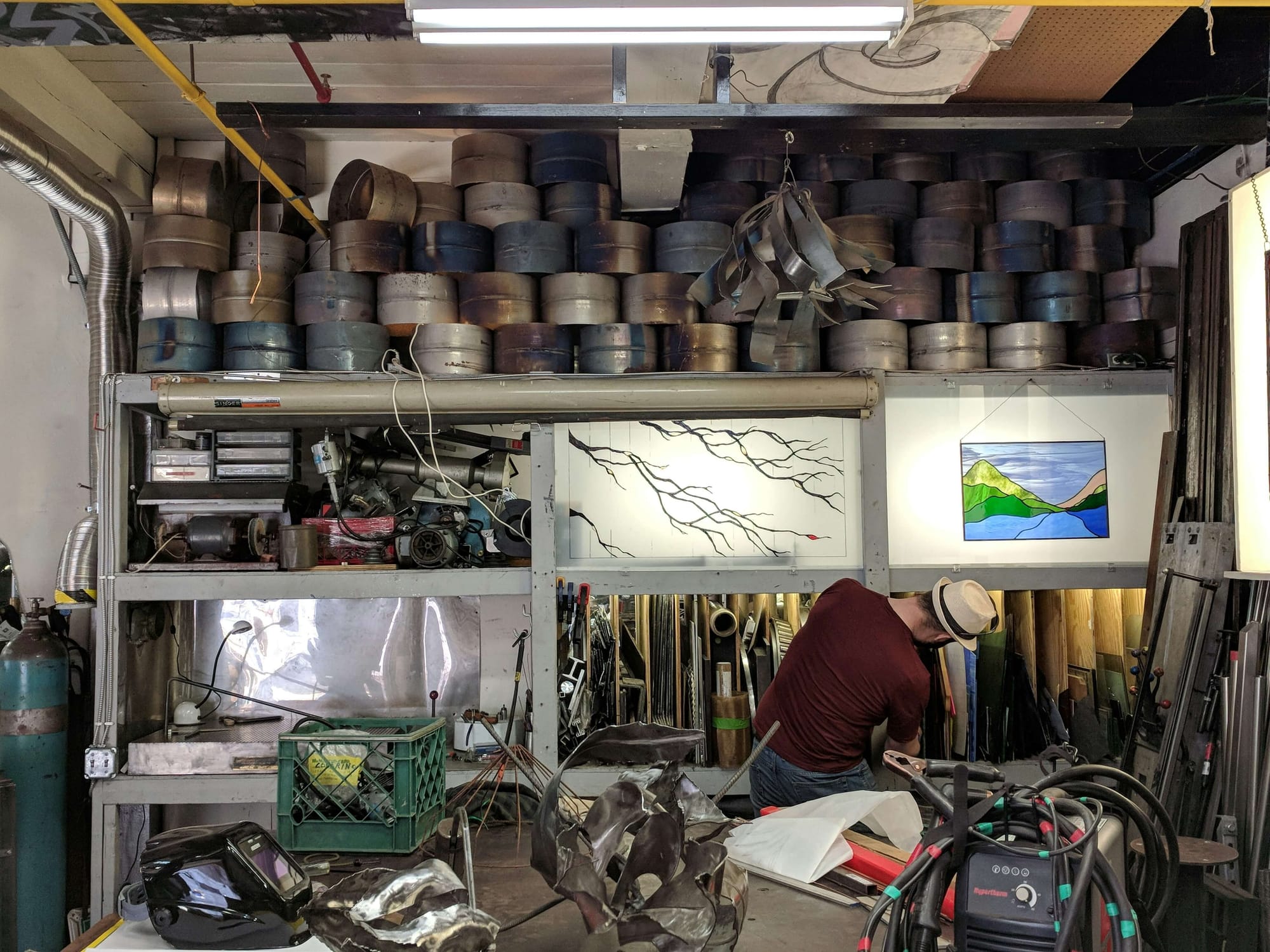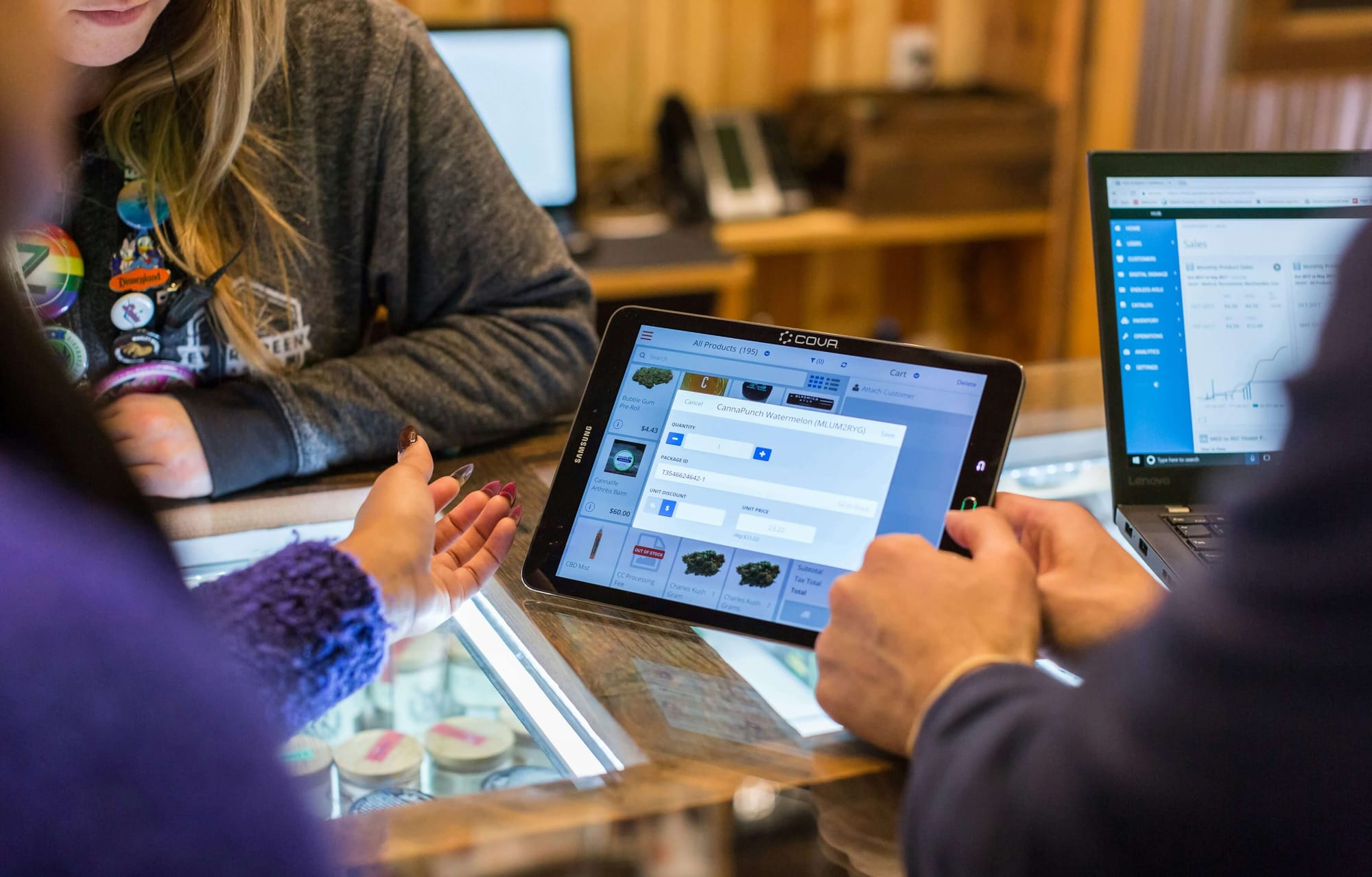Leather manufacturing is a time-honored craft that has been used for centuries to make clothing, shoes, bags, and other items. The leather industry is booming in many countries, and it is estimated that the global leather manufacturing market is worth a staggering $100 billion.
Leather is a very versatile material, and it is used in a wide range of products. It is considered a durable material and is often used for items that require strength and flexibility. Leather is also a popular material for fashion items such as shoes, bags, belts, and jackets.
This article covers the following:
- "From Hide to High-End: The Fascinating Process of Leather Production"
- "The Environmental Impact of Leather Manufacturing: Challenges and Solutions"
- "Leather Grades and Quality: What You Need to Know"
- "A Look Inside a Modern Tannery: Technology and Innovation in Leather Making"
- "From Designer Bags to Car Interiors: The Many Applications of Leather"
- "Leather Alternatives: Exploring Sustainable and Vegan Materials"
- "Tanning Methods: The Pros and Cons of Vegetable, Chrome, and Synthetic Tanning"
- "The Economics of Leather Production: Global Trends and Market Outlook"
- "Craftsmanship and Artistry: The Role of Skilled Workers in Leather Manufacturing"
- "From Ancient Times to Today: The History and Cultural Significance of Leather".
"From Hide to High-End: The Fascinating Process of Leather Production"
Leather production is a complex process that requires a skilled workforce and specialized tools and processes. Leather is one of the oldest materials used by humans, and its production has remained relatively unchanged over centuries. While modern production methods may have changed, the overall process of leather production has remained the same. The first step in the leather production process is the selection of rawhide. The hides are inspected and sorted according to thickness, quality, and size. The hides are then soaked in a vat of water and tannic acid to remove the hair and other debris. This process can take anywhere from two to six weeks depending on the type of hide. The next step is to prepare the hides for tanning. This process can be done using a variety of methods including vegetable tanning, chrome tanning, and aluminum tanning. The hides are then dried and stretched to the desired size and thickness. The third step is the dyeing process. Hides are typically dyed in a variety of colors to meet the desired outcome. This is done to add color to the leather and create a uniform look. After dyeing, the leather is treated with a waterproofing agent to protect it from the elements. The fourth step is the finishing process. The leather is buffed and polished to a high shine or a matte finish. It is then stamped with a logo or other identifying mark. Finally, the leather is cut and sewn into the desired product. Leather production is a time-consuming process that requires great skill and attention to detail. The final product is durable and long-lasting, making it a popular choice for clothing, shoes, and accessories. It is also a renewable resource, making it an environmentally friendly choice for many products. Leather production is an important part of the global economy and continues to be an important part of our everyday lives.
The Environmental Impact of Leather Manufacturing: Challenges and Solutions
Leather manufacturing has been around for centuries, but the process has changed drastically over the years. Leather is an incredibly versatile material that is used in a variety of different industries and products, including clothing, furniture, accessories, and even automotive parts.
Unfortunately, leather manufacturing can have a negative environmental impact. The process of tanning leather creates a range of pollutants that can be harmful to the environment, including air and water pollution.
In addition, leather is often treated with chemicals in the tanning process that can be hazardous. The environmental impact of leather manufacturing has become a growing concern for many countries, with some taking steps to reduce its negative environmental impacts.
In the United States, the Environmental Protection Agency (EPA) has implemented regulations to limit the number of pollutants generated from tanning and other activities related to leather manufacturing.
These regulations have helped to reduce the number of pollutants released into the environment. However, there are still many challenges that need to be addressed in order to reduce the environmental impact of leather manufacturing.
One of the biggest challenges is finding ways to reduce the amount of water and energy used in the tanning process. The tanning uses a lot of water and energy, and this can be very damaging to the environment.
One way to reduce the amount of water used is by using less-toxic tanning agents, such as vegetable tannins and natural oils. In addition, tanneries can also invest in water recycling systems that can help reduce the amount of water used. Another challenge is finding ways to reduce the number of hazardous chemicals used in the tanning process. Many of the chemicals used in tanning can be toxic to both humans and the environment.
One way to reduce the number of hazardous chemicals is to use less-toxic tanning agents, such as vegetable tannins and natural oils. In addition, tanneries can also invest in waste management systems that can help reduce the number of hazardous chemicals that are released into the environment.
Finally, another challenge is finding ways to reduce the amount of waste generated from leather manufacturing. Leather waste can be difficult to dispose of and can often end up in landfills or in the ocean.
In order to reduce the amount of waste generated from leather manufacturing, tanneries can invest in sustainable practices such as reusing scrap leather for other products, investing in waste management systems, and investing in recycling systems.
Overall, the environmental impact of leather manufacturing can be reduced with the implementation of regulations and sustainable practices. By limiting the amount of water and energy used in the tanning process, reducing the number of hazardous chemicals used, and investing in waste management and recycling systems, tanneries can reduce their environmental impact and help to create a more sustainable future.
Leather Grades and Quality: What You Need to Know
Leather has been used for centuries to make products that are both functional and beautiful. With so many types and grades of leather to choose from, it can be difficult to know which is best for your project.
Understanding leather grades and quality is key to making sure you get the best results. At the most basic level, leather is categorized into two categories: full-grain and corrected grain.
Full-grain leather is made from the entire hide and contains the natural grain pattern. This type of leather is the most durable and is often the most expensive. On the other hand, corrected grain leather has been buffed and processed to improve its appearance.
When assessing leather quality, look for factors such as thickness, grain, and finish. The thickness of the leather is usually measured in ounces, with heavier leather being more durable.
The grain pattern of leather is also important, as it can affect the look and feel of the material. Finally, the finish of the leather will determine how long it will last. Leather that has been treated with dyes, oils, and waxes will be more resistant to fading and wear.
In addition to full-grain and corrected-grain leather, there are also suede, nubuck, and split leather. The Suede is made from the underside of the hide and is usually less durable than other types of leather.
Nubuck is created by lightly sanding the top grain of the leather, resulting in a velvety texture. Split leather is made when the hide is split and then embossed with a grain pattern.
This type of leather is usually less expensive and not as durable as full-grain or corrected-grain leather. When purchasing leather, it is important to know the quality of the material you are getting.
Look for leather that is thick and has an even grain pattern. Make sure the finish is durable and will stand up to use. Finally, keep in mind that full-grain and corrected-grain leather are usually more expensive but will be more durable in the long run.
Leather grades and quality are important factors when choosing the right material for your project. Understanding the types of leather and the differences between them will help you make the best choice for your needs. With the right leather, you’ll be able to create beautiful and lasting products that you’ll be proud of for years to come.
Importance of Quality Control in Leather Manufacturing
Quality control is an essential part of any leather manufacturing process. It ensures that the leather used meets the desired standards of quality, durability, and performance. It is important to ensure that the leather used is free from any defects, has the correct specifications, and meets the safety requirements for use in any application.
The leather manufacturing process begins with the selection of the hide for the leather. The hide is inspected for any defects, such as holes, marks, or discolorations. Once the hide is approved, the leather is tanned and dyed to the desired shade.
The leather is then passed through a series of rolling and stretching processes to give it the desired thickness and texture. Once the leather is prepared, it is inspected again for any defects or inconsistencies.
The leather is then cut into the required sizes and shapes. Any unwanted edges are trimmed away and the leather is ready for the finishing process. This process includes staining, embossing, and any other treatments that are needed.
The leather is then checked again for any flaws or imperfections that may have been missed in the previous stages of manufacturing. After the leather is finished, it is tested for its physical properties, such as tensile strength, tear resistance, and abrasion resistance.
The leather is also tested for its chemical properties, such as resistance to water, oil, and chemicals. The leather is also checked for any color bleeding and fading. The finished leather is then inspected for any flaws and defects before it is packaged and shipped.
Quality control is an essential step in the leather manufacturing process. It ensures that the leather is free from any defects and meets the desired product specifications. It is important to ensure that the leather is safe for use in any application and that it is of the highest quality.
Quality control also ensures that the leather is durable and can stand up to the wear and tear of daily use. By following a strict quality control process, leather manufacturers can ensure that their products meet the highest standards and provide their customers with the best quality leather products.
Best Practices for Quality Control in Leather Manufacturing
1. Regularly inspect the incoming materials: Quality control should begin with the inspection of the incoming leather materials. Inspect the material for color, texture, shrinkage, and any other quality defects.
2. Establish quality control standards: Establishing quality control standards is necessary for producing quality leather products. It should include the standards for the product’s physical and chemical properties, as well as the manufacturing process.
3. Utilize advanced testing and measuring equipment: The use of advanced testing and measuring equipment can help to ensure that the leather product meets the quality control standards. Examples of such equipment include digital thickness gauges, camber meters, and thermometers.
4. Utilize sampling techniques: Sampling techniques can help ensure that the leather material is of the required quality. The most commonly used sampling techniques include visual inspection, physical testing, chemical testing, and analytical testing.
5. Monitor the manufacturing process: Quality control should also involve monitoring the manufacturing process. This includes monitoring the cutting, stitching, dyeing, and finishing processes.
6. Establish a quality assurance system: Establishing a quality assurance system is essential for ensuring that the leather products meet the required quality standards. This should include regular inspections of the manufacturing process, as well as the finished product.
7. Track and document quality control measures: Tracking and documenting quality control measures is important for the long-term success of the leather manufacturing process. This should include keeping records of the materials used, the quality control tests performed, and the results.
8. Utilize customer feedback: Customer feedback can provide valuable insight into the quality of leather products. It can help identify areas of improvement and ensure that the products meet customer expectations.
A Look Inside a Modern Tannery: Technology and Innovation in Leather Making
The leather industry has long been associated with traditional methods of manufacturing and processing. However, with the advent of technology and innovation, the industry is undergoing a tremendous transformation.
From the use of advanced machinery to the application of cutting-edge techniques, the leather industry has evolved significantly in the last few decades. Technology and innovation have enabled the leather industry to produce high-quality products in a more efficient manner.
For instance, new machinery and equipment have increased the automation of leather production, resulting in shorter lead times and higher productivity. Additionally, computer-aided design (CAD) and computer-aided manufacturing (CAM) have enabled manufacturers to create highly intricate designs with an increased level of accuracy and precision.
Innovations in leather production have also led to the development of new materials. These include eco-friendly synthetic leathers, which are an attractive alternative to traditional leathers due to their reduced environmental impact.
In addition, advanced fabrics, such as wool, cotton, and polyester, are being used to create unique textures and styles. Innovation has also led to the introduction of new processes, such as laser cutting and embroidery, that allow manufacturers to create intricate details on leather products.
Furthermore, the use of modern digital printing has allowed manufacturers to create designs with greater flexibility and accuracy. Finally, technology and innovation have allowed the leather industry to create products that are more durable and resistant to wear and tear.
With the introduction of new treatments and finishes, leather products are becoming increasingly resistant to water and other elements, making them more suitable for outdoor use.
The advances in technology and innovation have allowed the leather industry to remain competitive in the global market. As the industry continues to embrace new technologies and techniques, the possibilities for creating high-quality products are practically endless. Thus, the leather industry is sure to remain a leader in the fashion and apparel industry for years to come.
From Designer Bags to Car Interiors: The Many Applications of Leather
Leather has been used by humans for many centuries, and its versatility and durability have stood the test of time. From clothing to furniture and accessories, leather is one of the most sought-after materials on the market.
While leather is commonly known for its durability and luxurious feel, it is also a very versatile material with a variety of applications. One of the most common uses for leather is in clothing.
Leather jackets, trousers, and boots are all popular items of clothing. Leather is incredibly durable and long-lasting, and it can also be tailored to fit any size. Leather clothing is also very stylish and can range from classic to modern styles.
Leather is also often used to create furniture. Sofas, chairs, and ottomans are some of the most common pieces of furniture made with leather. Leather is great for upholstery because it is comfortable, durable, and easy to clean.
Leather furniture also adds a touch of elegance and sophistication to any room. Leather is also a popular material for accessories. Belts, purses, and wallets are some of the most popular items made with leather.
Leather is strong and comfortable, making it a great choice for accessories. Leather accessories also look great and can be easily matched with any outfit. Leather is also used in many different industries.
Leather is often used in the automotive industry to make car interiors and upholstery. Leather is also used to make saddles and harnesses for horses. Leather is also used to make shoes, book bindings, and even musical instruments.
Leather manufacturing is a complex and intricate process. The leather starts as a rawhide and is then tanned, dyed, treated, and finished. The finishing process is very important as it determines the texture and quality of the final product.
Different techniques are used to create different finishes, such as embossing, top-coating, and burnishing. The many applications of leather demonstrate its versatility and durability.
Leather is an incredibly popular material for clothing, furniture, and accessories, and it is also used in many different industries. Leather is a timeless material, and its popularity continues to grow.
Leather Alternatives: Exploring Sustainable and Vegan Materials
When it comes to fashion, animal products like leather have long been a popular choice for clothing, shoes, and accessories. But, with the growing awareness of environmental and animal welfare issues, there is an increasing demand for alternatives to leather that are sustainable and vegan.
In this article, we’ll explore some of the most popular leather alternatives – from plant-based materials such as cork to high-tech synthetic fabrics like polyurethane. We’ll also discuss the environmental impact of each option and provide tips on how to identify and shop for vegan materials.
Cork Cork is a natural, sustainable material that can be used to make a variety of products, including shoes, bags, wallets, and even clothing. It’s made from the bark of cork oak trees, which are renewable and can be harvested without cutting down the tree.
Cork is also lightweight, water-resistant, and breathable, making it a great option for shoes and bags. It also has a unique, textured look that is often used to create interesting patterns and designs.
Pinatex Pinatex is a new, sustainable alternative to leather made from pineapple leaves. The leaves are harvested from pineapple plants in the Philippines, then processed into a non-woven mesh material.
This material is then dyed and treated to create a durable, leather-like fabric. Pinatex is strong and flexible, making it a great choice for shoes, bags, and accessories. It’s also biodegradable and recyclable, so it’s a great option for those looking for an eco-friendly alternative to leather.
Polyurethane Polyurethane (PU) is a synthetic fabric that is often used to create leather-like materials. It’s durable and flexible, making it a great choice for shoes, bags, and accessories.
PU is also water-resistant and easy to clean, making it a practical choice for everyday use. Polyurethane is also a popular choice for vegan leather because it’s made from petroleum products, not animal products.
However, it is not as eco-friendly as some of the other materials on this list, so it’s important to look for PU products made from recycled materials. Recycled Plastic Recycled plastic is another great option for those looking for a sustainable and vegan alternative to leather.
It’s made from post-consumer plastic waste, which is collected and processed into a durable, waterproof fabric. Recycled plastic is an excellent choice for shoes, bags, and accessories because it’s lightweight, durable, and water-resistant. It’s also an eco-friendly option, since it’s made from recycled materials and doesn’t require the use of any new resources.
Kombucha Leather Kombucha leather is a new, sustainable alternative to leather made from fermented tea. The tea is processed into a leather-like material that is strong, flexible, and water-resistant.
It’s also vegan and eco-friendly, since it’s made from a renewable resource and doesn’t require any animal products or petroleum products. Kombucha leather is still relatively new, so it’s not yet widely available.
However, it’s a promising material that could become a popular choice for shoes, bags, and accessories in the future. Tips for Shopping for Vegan Materials When shopping for vegan materials, it’s important to look for items that are clearly labeled as “vegan” or “animal-free.”
It’s also a good idea to read the product description to make sure that it doesn’t contain any animal products or animal byproducts. It’s also important to check the manufacturer’s website to make sure that they are committed to using sustainable and ethical materials.
Many companies will list the materials they use and how they source them, so you can be sure that the items you buy are vegan and eco-friendly. Conclusion Finding sustainable and vegan alternatives to leather is more important than ever.
There are a variety of materials available, from cork to recycled plastic to kombucha leather, that offers a durable, stylish, and eco-friendly alternative to animal products. By doing your research and shopping responsibly, you can find stylish and ethical alternatives to leather that are good for both the environment and animals.
Tanning Methods: The Pros and Cons of Vegetable, Chrome, and Synthetic Tanning
Tanning is a process that is used to preserve animal hides and make them suitable for a variety of uses. It is an essential part of the leather manufacturing process and can be done using a variety of methods.
Three of the most common are vegetable, chrome, and synthetic tanning. Each has its own advantages and disadvantages, and it is important to understand the pros and cons of each before deciding which tanning method is best for your project.
Vegetable Tanning Vegetable tanning is a popular method of tanning that utilizes natural ingredients, such as tree bark, to tan the hide. This method is known for its environmental friendliness, as it does not release any harmful substances into the environment.
It is also a relatively slow process, meaning that the hides must be allowed to sit and soak in the tanning liquor for up to several months before they are ready for use. Pros: Vegetable tanning is eco-friendly, as it does not use any harsh chemicals or release any pollutants into the environment.
It also produces strong, durable leather that is suitable for a variety of uses. Cons: Vegetable tanning is a very time-consuming process, and the hides must be allowed to soak in the tanning liquor for several months before they are ready for use.
The process also tends to be more expensive than other tanning methods due to the need for natural ingredients. Chrome Tanning Chrome tanning is a process that is done using chromium salts.
This method is much faster than vegetable tanning, meaning that the hides can be tanned in as little as one day. Chrome-tanned leather is also known for its softness and flexibility, making it a popular choice for garments and upholstery.
Pros
Chrome tanning is a quick process, meaning that the hides can be tanned in a single day. The leather produced is also soft and flexible, making it suitable for a variety of uses.
Cons
Chrome tanning is not an environmentally friendly process, as it requires the use of harsh chemicals that can pollute the environment. The leather produced is also not as durable as leather tanned using other methods.
Synthetic Tanning Synthetic tanning is a process that utilizes synthetic chemicals to tan the hides. This method is much faster than vegetable and chrome tanning, meaning that the hides can be tanned in as little as a few hours.
The leather produced is also known for its resistance to water and other environmental factors, making it suitable for a variety of outdoor uses.
Pros
Synthetic tanning is a very fast process, meaning that the hides can be tanned in a matter of hours. The leather produced is also resistant to water and other environmental factors, making it suitable for outdoor uses.
Cons
Synthetic tanning is not an environmentally friendly process, as it requires the use of harsh chemicals that can pollute the environment. The leather produced is also not as durable as leather tanned using other methods.
When deciding which tanning method is best for your project, it is important to consider the pros and cons of each method. Vegetable tanning is the most environmentally friendly option, but it requires a longer process time.
Chrome tanning is a quick process and produces soft, flexible leather, but it is not eco-friendly. Synthetic tanning is the fastest option but is not eco-friendly and produces leather that is not as durable as other tanning methods. Understanding the pros and cons of each method will help you make the best decision for your project.
The Economics of Leather Production: Global Trends and Market Outlook
The leather industry is an ever-evolving sector that is both complex and intriguing. It is one of the oldest industries in the world and has been around for centuries, but modern technology and innovative production techniques have made it increasingly efficient and economical.
The global leather industry is estimated to be worth close to USD $100 billion, and it is expected to reach a value of USD $138 billion by 2027. Leather production is a major global industry, with countries from all over the world taking part in the production of leather goods and textiles.
China, India, and Brazil are the top three producers of leather in the world, accounting for more than half of the global production. The United States is also a major player in the industry, accounting for more than 10 percent of global leather production.
The demand for leather has seen a steady rise in recent years, with the growing popularity of leather fashion accessories and other leather-related items. The global leather market is expected to grow at a compound annual growth rate of nearly 6 percent over the next five years.
This growth is expected to be driven by the increasing demand for leather goods in both developed and developing markets. One of the main drivers of leather production economics is the cost of raw materials.
Leather is made from animal skins, which are increasingly expensive. The cost of leather hides can vary greatly depending on the quality and the animal they are sourced from.
As such, the cost of leather production is largely dependent on the cost of raw materials. Another key factor in the economics of leather production is the labor costs associated with the process.
Labor is an expensive component of the leather production process, and it is important to consider the labor costs involved when calculating the overall cost of leather production.
In addition to the cost of raw materials and labor, the cost of leather production is also affected by the cost of tanning and finishing the hides. Tanning is a process that removes fat and water from the hides, making them more durable and easier to work with.
Finishing is a process that adds color, texture, and protection to the leather. Both of these processes are essential for producing high-quality leather, and the cost of these processes has a direct impact on the economics of leather production.
The global leather industry is highly competitive, and the market is constantly evolving. Companies must keep up with the latest trends in order to remain competitive and stay ahead of the competition.
By understanding the economics of leather production and staying up to date with global trends, companies can ensure that they remain competitive and profitable in the long run.
Overall, the economics of leather production are complex and ever-changing. Companies must stay up to date with current global trends and raw material costs in order to remain competitive and profitable. By doing so, companies can ensure that they remain competitive and successful in the global leather industry.
Craftsmanship and Artistry: The Role of Skilled Workers in Leather Manufacturing
Leather manufacturing is an art form that involves both craftsmanship and artistry. Skilled leather workers have been in demand since the beginning of civilization, and their skills and knowledge are still essential today.
The process of leather manufacturing begins with the selection of raw materials. This is usually an animal hide, though some leather may be made from other materials such as synthetic polymers.
The hide is then tanned to make it pliable and durable. This process involves a variety of different chemicals and processes, and it is crucial that the leather worker has a deep understanding of the different tanning agents and their effects.
Once the hide is tanned, the leather worker then has to cut the hide into the desired shape and size. This requires a great deal of skill, as the leather worker must take into account the size and shape of the finished product, as well as the different cutting techniques.
The next step involves the dyeing of the leather. This is done to give the leather the desired color and finish. Again, this requires a great deal of skill and knowledge, as the leather worker must be able to select the right dyes, mix them correctly, and apply them in the right way to achieve the desired effect.
Finally, the leather is finished by either burnishing, buffing, or brushing. This gives the leather a professional look and feel, and is often the final step before the leather is ready for use.
Burnishing and buffing involve rubbing the leather with a special wax or cream to give it a glossy finish. Brushing is used to give the leather a softer, more natural look. The art of leather manufacturing requires a great deal of skill and knowledge.
It is a craft that has been around for centuries, and one that is still in demand today. Skilled leather workers are essential to ensure that the final product is of the highest quality.
They are responsible for selecting the right raw materials, tanning the leather correctly, and creating the desired shape and finish. Their skills and knowledge are essential to the overall success of any leather manufacturing project, and they have a large part to play in keeping the craft alive.
From Ancient Times to Today: The History and Cultural Significance of Leather
Leather has been around for centuries, and its use and cultural significance have evolved throughout the years. From protective armor to luxury goods, leather has been used for a variety of purposes and has been an integral part of many cultures. Here is a look at the history and cultural significance of leather from ancient times to today.
In ancient times, leather was used to make protective armor. It was often used to protect warriors from weapons and elements. In addition to its use in armor, leather was also used to make clothing, shoes, and bags.
It was even used to make musical instruments, such as the lyre. In the Middle Ages, leather was used to make saddles, harnesses, and other horse tack. It was also used to make book covers, belts, and even armor.
During this time, leather also became an important part of the fashion industry. In the 16th century, leather was used to make gloves, boots, and other luxury goods. In the Industrial Revolution, leather was used to make furniture and clothing.
As the Industrial Revolution came to a close, leather goods became a sign of wealth and status. Leather was used to make high-end items such as purses, wallets, and briefcases.
Today, leather is still used for a variety of purposes. It is still used to make saddles, harnesses, and another horse tack. In addition, leather is still used to make clothing, shoes, and accessories, as well as furniture, book covers, and even musical instruments.
Leather has been used throughout history and has been an integral part of many cultures. Its use and cultural significance have evolved over the years, from protective armor to luxury goods.
Leather is still used today for a variety of purposes, from clothing and accessories to furniture and musical instruments. Leather is a timeless material that has been and will continue to be an important part of our culture.
How Can Deskera Assist You?
As a manufacturer, you must keep track of your inventory stock. The condition of your inventory has a direct impact on production planning. It also has a direct impact on people and machinery use and capacity utilization.
Deskera MRP is the one tool that lets you do all of the above. With Deskera, you can:
- Control production schedules
- Compile a Bill of Materials
- Produce thorough reports
- Make your dashboard
Deskera ERP is a complete solution that allows you to manage suppliers and track supply chain activity in real-time. It also allows you to streamline a range of other company functions.
Deskera Books allows you to manage your accounts and finances better. It helps maintain good accounting standards by automating billing, invoicing, and payment processing tasks.
Deskera CRM is a powerful tool that organizes your sales and helps you close deals rapidly. It enables you to perform crucial tasks like lead generation via email and gives you a comprehensive view of your sales funnel.
Deskera People is a straightforward application for centralizing your human resource management activities. Not only does the technology expedite payroll processing, but it also helps you to handle all other operations such as overtime, benefits, bonuses, training programs, and much more.
Key Takeaways:
- The leather manufacturing industry is highly competitive, with many players vying for a share of the market.
- Another trend that is likely to shape the future of the leather industry is the growing demand for personalized and customized products.
- Emerging markets such as China, India, and Brazil are becoming major players in the leather industry.
- Some of the main environmental concerns associated with leather production include the use of hazardous chemicals, high water usage, air and water pollution, and deforestation.
- The future of the leather manufacturing industry is likely to be shaped by a range of factors, including changing consumer preferences, technological advancements, and environmental concerns.
Related Articles:
